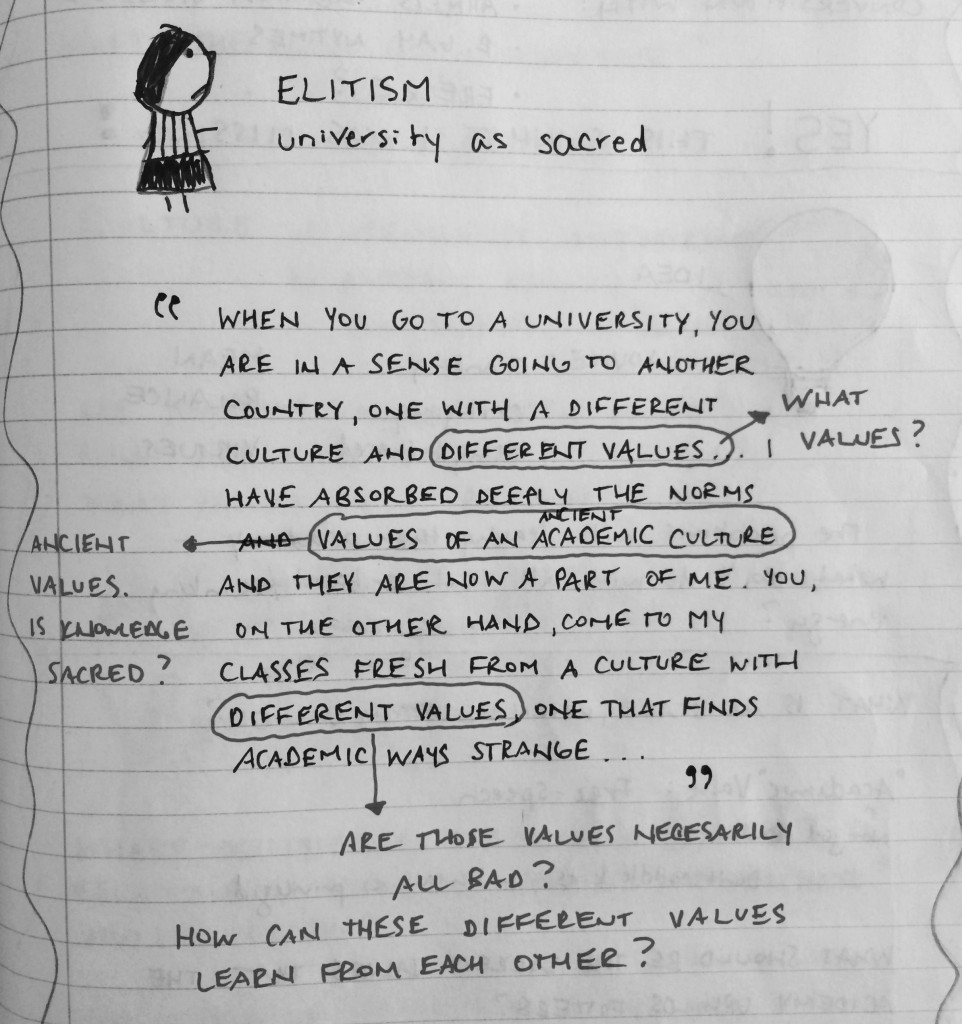Anybody gets to ask any questions about any fiction-related issues she wants. No question about literature is stupid. You are FORBIDDEN to keep yourself from asking a question or making a comment because you fear it will sound obvious or unsophisticated or lame or stupid. Because critical reading and prose fiction are such hard, weird things to try to study, a stupid-seeming comment or question can end up being valuable or even profound. I am deadly-serious about creating a classroom environment where everyone feels free to ask or speak about anything she wishes. So any student who groans, smirks, mimes machine-gunning or onanism, chortles, eye-rolls, or in any way ridicules some other student’s in-class question/comment will be warned once in private and on the second offense will be kicked out of class and flunked, no matter what week it is. If the offender is male, I am also apt to find him off-campus and beat him up.
I have mixed feelings about these rules. I really like this idea of encouraging otherwise reticent/fearful students to speak up and ask questions. And I appreciate his willingness to punish assholes who mock fellow students. But I don’t completely agree with the idea that there are no stupid (lit) questions. Well, maybe there aren’t stupid questions, but there are thoughtless, uncaring questions that aren’t aimed at furthering the discussion or digging deeper into the text, but at pontificating or avoiding the difficult work of finding your own answers. How did DFW handle these types of questions?


